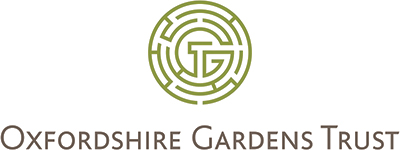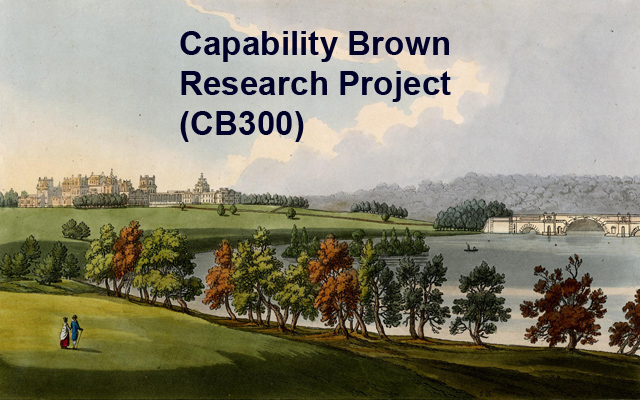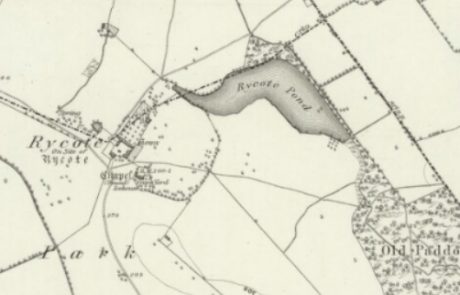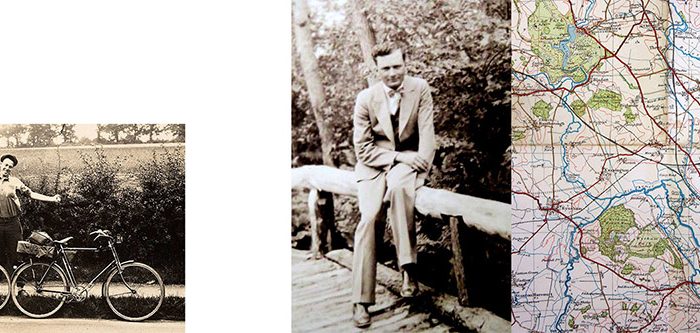Historical context
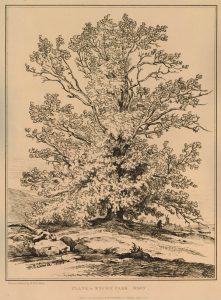
Plane, in Rycot[e] Park, by W De la Motte, 1806 © The Trustees of the British Museum
Brown’s influence
Brown was commissioned to landscape the grounds in the 1770s by Willoughby Bertie, 4th Earl of Abingdon. There are financial statements recorded for Brown’s work including payments to his Drummond’s Bank account totalling over £2,500, and a smaller undated payment shown in his account notebook. However, there is little physical evidence of Brown’s work although it is thought that his landscaping included the conversion of fishponds into a serpentine lake, the building of an icehouse, and the creation of a fosse.
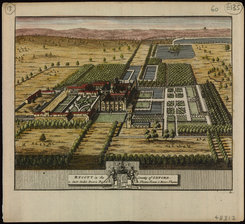
Coloured engraving of Rycote Park,1707, by L Knyff & J Kip. © Bodleian Libraries, Oxford University
The lake at Rycote is typical of Brown’s water features. Recent dredging has revealed a Georgian wall across the middle, possibly used as a dam when the lake was under construction. There is a sluice at the lake outflow and a complex drainage system with a ditch running along the far side of the lake. This crosses under the end point of the lake out into a ditch. There is also a ‘T’ junction that eventually drains into the nearby River Thame. On the far side of the lake there is a series of pools below the level of the lake. Recent landscaping has provided views of the lake from the house.
The icehouse, which has been recently restored, comprised a brick vault under an earth mound. The fosse (a ha-ha without a stone or brick facing) beyond the pleasure grounds is also thought to have been a feature designed by Brown. There are a few veteran trees at Rycote that could have been planted during the 18th century landscaping, as well as possible suckers of original trees planted by Brown in the pleasure grounds, and some evidence of poplars in a wooded area.
Current use
The restored and extended house is now a private family home. Around the house are formal gardens and a landscape park with a large lake and woodlands. Many new trees have been planted in the areas of woodland and the gardens surrounding the house. There is also a productive walled kitchen garden and large glasshouse. The park currently occupies 223 hectares.
Special features
The chapel, whose chantry was consecrated in 1449.
The surviving 16th century tower of the Tudor Palace.
The recently restored icehouse, the lake and the fosse ─ all presumed to be by Brown.
The yew tree near the chapel is thought to have been planted around 1135.
An oriental plane, Platinus orientalis, is thought to have been planted in 1605.
Designation status
The parkland is not included in Historic England’s Register of Parks & Gardens.
Buildings and structures listed by Historic England for their architectural or historic interest are: Chapel (Grade I), Rycote House (Grade II*), 16th century tower and wall (Grade II*), icehouse (Grade II), 18th century barn 50m SW of house (Grade II), early 16th century bakery (Grade II).
Degree of completeness
The Tudor tower and wall survive. The presumed Brown lake and icehouse have been substantially restored.
Ownership and access
In private ownership. The chapel and icehouse are accessible to the public. Other areas can be visited by arrangement.
Name of district
South Oxfordshire
Grid reference
SP 666 047
Sources of Information
Parks and Gardens – Rycote Park
RHS Lindley Library Occasional Papers, ‘Capability Brown and his account book’ (October 2016), Vol. 14, Royal Horticultural Society
Stroud, D., Capability Brown (Faber & Faber, 1975), pp. 159─60
Bradley-Hole, K., ‘A landscape reborn, Rycote Park, Thame, Oxfordshire’ (Country Life, 22 July 2009)
Goodall, J., ‘Rycote Park, Oxfordshire, Part I: The Home of Mr and Mrs Bernard Taylor’, Country Life (3 September, 2008)
Musson, J., ‘A palace reborn, Rycote Park, Oxfordshire, Part II: The Home of Mr and Mrs Bernard Taylor’. Country Life (8 September, 2008)
Phibbs, J., ‘A List of Landscapes attributed to Lancelot ‘Capability’ Brown’, Garden History, Vol. 41:2 (2013), pp. 244-277
Phibbs, J., ‘A List of Landscapes attributed to Lancelot ‘Capability’ Brown – Revisions’, Garden History, Vol. 42:2 (2014), pp. 281-6
